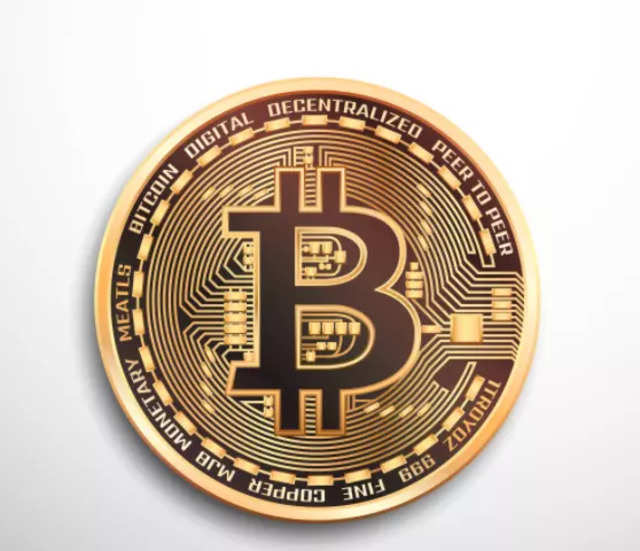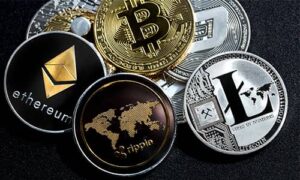Since ancient times, gold has been recognized as a universal emblem of prosperity and safety. But as the globe accelerates towards the digital age, Bitcoin has emerged as a new participant in the investment sector. Here, we’ll evaluate the parallels, distinctions, and different functions of the two assets in the world of investments.
Similarities: Gold and Bitcoin as Value Stores
Both bitcoin and gold are regarded as stores of value, and both have varying degrees of scarcity. Due to the difficult mining and extraction procedure, there is a limited supply of gold, which raises its price. Similar to how the quantity of Bitcoin is limited to 21 million coins, this digital scarcity has increased its value.
Additionally, both investments are thought of as inflation hedges. Due to its enduring worth, investors frequently turn to gold during times of economic instability, while Bitcoin, which is unaffected by conventional monetary policy, is earning a reputation as “digital gold.”
Differences: Volatility, usefulness, and tangibleness
Tangibility is one of the most obvious contrasts between gold and Bitcoin. Gold is a tangible asset that you may own, and it serves more purposes than just serving as a store of value. With its many industrial uses in the fields of electronics, dentistry, and aerospace, it has inherent value.
Bitcoin, on the other hand, is a digital asset. Its primary purpose is to enable safe, quick, and borderless transactions on the blockchain, which has the potential to upend established payment systems.
The price stability of the two assets also differs significantly. Although gold prices can change, they rarely experience as much volatility as Bitcoin. Bitcoin is a high-risk, high-reward investment because of its price’s ability to rapidly soar and plummet.
Market acceptability and perception
Gold has always captured people’s attention, both personally and professionally. Its inherent value and timeless appeal have elevated it to the top tier of precious metals in demand. The history of gold as an investment instrument is an enthralling tale of wealth, power, and preservation that spans ancient civilizations and contemporary economies. In this blog article, we examine the elements that have contributed to gold’s persistent appeal as well as the long history of people and corporations investing in it.
Gold’s Early Origins as a Wealth Symbol
Gold has been sought after since the beginning of civilization. Ancient civilizations like the Egyptians, Greeks, and Romans saw gold as a representation of riches and authority. Pharaohs in ancient Egypt were buried with enormous amounts of gold in the belief that it would follow them to the afterlife. To promote trade and demonstrate their supremacy in the economy, the Greek and Roman empires issued gold coins.
The Gold Rush Era: Creating Empires and Fueling Dreams
The world’s infatuation with gold began during the Gold Rushes of the 19th century in places like South Africa, Australia, and California. All types of prospectors went to these areas in search of riches. Huge gold deposits were found, which resulted in the development of thriving cities and mining enterprises.
Turbulence and Economic Uncertainty: Gold as a Hedge
As economies went through turbulent and uncertain times, the value of gold as an investment increased. Due to its durability and widespread acceptability, gold was sought after as a refuge during the Great Depression of the 1930s by both individuals and corporations. Governments began to back their currencies with gold after realizing the value of the metal, creating the gold standard.
The Post-War Era: Wealth Preservation and Diversification
The view of gold as an investment changed significantly in the years following World War II. The Bretton Woods arrangement, which fixed major currencies to the dollar, allowed gold to play a crucial role in regulating world economies. The gold standard was abandoned by several nations when the system started to fall apart in the 1970s, which caused gold prices to soar and a rise in interest in investing directly in the precious metal.
Exchange-Traded Funds (ETFs): Accessibility and Flexibility are Driving Their Growth
Exchange-Traded Funds (ETFs) backed by gold have become more common in recent decades, changing the economic landscape. These investment vehicles make it possible for people and companies to access gold without really owning any. ETFs make gold investments more approachable, liquid, and flexible for a wider range of investors.
Perspectives from Today: A Variety of Investors
A wide range of investors nowadays are aware of the benefits of holding gold in their portfolios. People look to gold as a hedge against inflation, a refuge during economic downturns, or a way to diversify their investments. To ensure stability and confidence in their own currencies, central banks continue to hold sizable gold reserves. Additionally, companies buy gold to preserve their wealth against financial instability.
Despite major advancements in acceptability and use, Bitcoin is still a relatively young technology. It is working to establish its reputation and win over the general public. Bitcoin’s regulatory structures are still developing, and while its future is bright, there are still some unknowns.
Conclusion
Although the thought of owning gold intrigues you, do the logistical difficulties involved in storing and protecting physical gold leave you unimpressed? Do you want to join the cryptocurrency revolution but are hesitant to because of the high volatility of many digital assets? If so, Pax Gold might be your ideal option.
To learn more about Pax Gold, a digital token that is backed by one fine troy ounce of a London Good Delivery gold bar, please read my upcoming blog post. Learn how Pax Gold enables you to own actual gold while taking advantage of the ease and flexibility offered by a digital asset.
The choice of whether to invest in gold or bitcoin is ultimately not a zero-sum contest. Both conventional and digital stores of value may have a role in an investor’s portfolio as the financial landscape continues to change.






